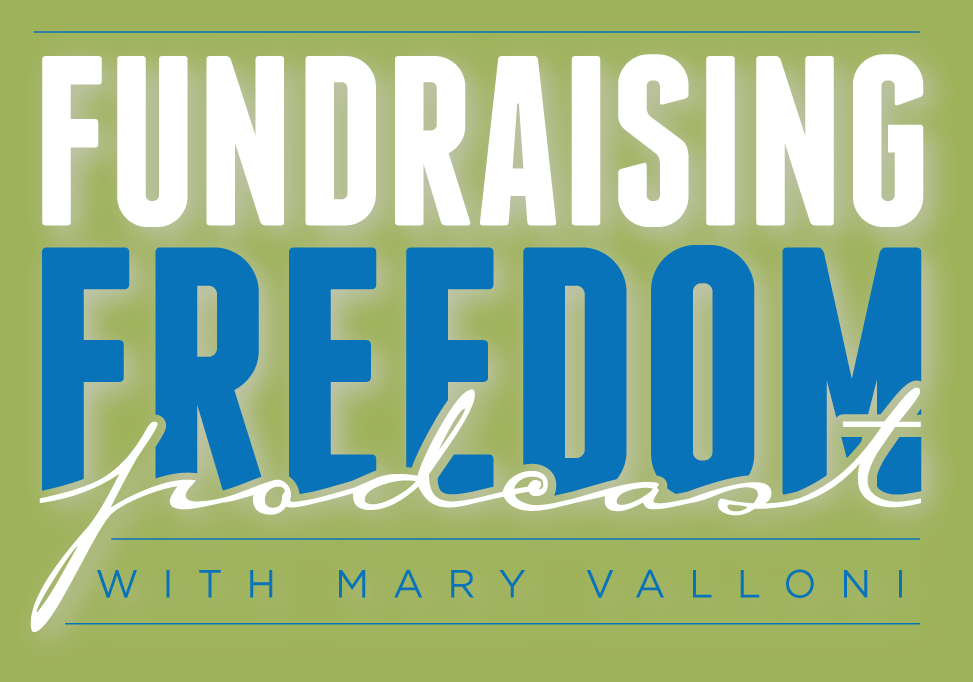Podcast: Play in new window | Download
Subscribe: Apple Podcasts | Android | RSS
Today we’re talking about how to create a personal or an organizational budget that actually works for you coming into 2021. I know that budgeting is something that some people love, and other people hate – there’s a love-hate relationship with the budget. And for many of you, you’ve probably already gone through the budgeting process. Usually, that happens in the fall time as you’re preparing for the next year. But you may be in a season where things are changing every single day. We never know what tomorrow is going to bring. Today’s conversation is probably not going to be this brand new information that you’ve never heard of before. But I think that what we can do today is we can actually talk through making your budget work for you.
As I work with organizations, what I find is that so many of them do not have a fundraising number that they’re actually working towards. Many times, they get into this cycle where they just want more. However, it’s important that you actually have a clear number, an actual fundraising goal that you’re working towards. I don’t want you to randomly pick a number, that is not a great way to budget, it’s not a great way to fundraise or to invite other people to be a part of your work. Here are some tips I want to share.
If you look back and reflect on 2019 and consider how much you raised as well as the work you did, you’re probably going to pick up about 50% of that normal behavior, and 50% of 2020, after March, where we had to modify everything. So 2021, you’re probably still going to have online events, you’re probably still going to have the social distancing, and possibly doing a lot of things on Zoom, and working through major gifts, shifting that fundraising around so that you can modify your behavior to fit the season that we’re in. As we move into 2021, I want you to look at where your money went.
I work on my budget every single week. I know that some people don’t look at their budget very often, but I am a stickler for the budget because the budget tells you where your money is going, and it tells you where it went. As you put numbers on a sheet of paper when you budget, you’re just randomly putting numbers down on a sheet of paper, right? Because you’re just trying to get a good 10,000-foot view of what your budget looks like. So, as you’re putting those numbers down on paper, the best way to budget is to look at where did we spend the money last year. Now you may be a first-year raising these funds or bringing in these dollars and so you may not have past years to look at so the best you can do is really just take a good guess at what it’s going to take. When you start assessing and you look at where the dollars went, where did we end up spending money? Maybe we didn’t spend in certain categories like travel conferences or training because, in 2020, some of those things just didn’t happen. So for 2021, we’re going to modify that and start to add a little bit of that back probably for the second half of 2021. Hopefully, after we do get some sort of vaccine in the process, that’ll allow us then to start looking at, well, maybe we can do some events in the fall of next year, but maybe not huge ones, just small things that you can start to engage people back into face-to-face communication with your organization and with your cause.
Number two, look at what your priorities are, what is most important, and in the previous posts, I’ve talked a lot about going back to your vision of what is it that we’re trying to do as an organization, what’s the ultimate end result. Now if you are a fundraiser, you’re not responsible for the mission side of the organization, you obviously are just given a number from the mission side, and they’re telling you “Hey, this is how much it’s gonna cost for us to do the work we’re doing on the mission side, here’s your number.” Now, that is actually an easier position to be in. That’s the position I was in for many, many years, where I just was told, “Hey, go raise a quarter of a million dollars, go raise a half a million dollars, that’s what your task is.” And I never had to really come up with my number, so to speak, but I was able to create those stretch goals and, and really work with my committee to come up with a goal that we wanted to do as a team. Set your priorities, what are you spending those dollars on so that you know exactly how much money you need to raise.
The budget is what allows you to feel comfortable about making the ask when you know where those dollars are going to go. You can answer your donor’s questions, you can answer your prospective donors’ questions because you know exactly how that money is going to be spent. If you are in a position where you’re, if I say to you, “hey, I want to give you $10,000 to your cause.” And your immediate reaction isn’t we’re going to do ABCD with that money. If you are like, I don’t know what we would do with that money, you have a problem. And the reason why you’re not seeing those gifts come into your cause is that you don’t have a plan. People who have money will smell that out, they will know that you are not prepared and you’re not ready to receive their gift, which means they’re not going to give it. So make sure that your budget is really clearly aligned so that you know when you’re having that conversation with somebody your mind shifts over during the conversation to those line items.
The next thing is I want to make sure that you have clear categories. If you’re raising funds in different buckets such as from individuals, companies, or organizations like churches or clubs, you want to start to look at those categories of income first. Then we want to look at each category of income, what expenses are we going to have that correlate to that category of income. What is it costing us to raise these dollars? This is your fundraising budget. If you are someone who is responsible for the mission side and the fundraising side, you need to budget to make sure that your mission is really clear on the expenses that it’s going to take for that that what you’re going to do on the program side. And you’re going to need to know your expenses on the fundraising side so that you are really clear on those percentages. And just as a reminder, if you are the program, remember this – if you are a one-man show or a two-man show, and your program is you doing the work, you sitting down, you training you helping that individual, you are the program. So anytime that you are the one who’s putting out the results, that tangible stuff that’s happening, like your organization wouldn’t happen without you, you are the program. So your salary, everything that falls under those line items, that’s part of the program.
Next, we want to total all the categories. How much are we raising in revenue? How much are we spending on our expenses? These two numbers should be equal, we want a zero-based budget so that we know where every single dollar goes. Now, if you do raise above and beyond, and you’ve fulfilled every dollar on this budget, the next dollars that you bring in, they’re going to go to A, B, and C, and maybe those are projects, maybe those are categories that if you can fulfill your base budget, these are the things that you’d love to do. You can share that with your donors. You can share that with prospective donors so that they know you’ve got a vision that far exceeds your basic budget.
Number six, after you’ve got your categories taken care of, then obviously, we take action. Now we do with the budget says, we follow the plan, we stay at or under each of those line items. Now, here’s one thing that I want you to understand is that you created this thing. So it’s yours, you put the numbers on the sheet of paper, nobody is going to come after you and say “oh, my gosh, John, you spent $1 too much in that category. And not enough over here.” While number six is to take action and to stay out at or under those line items, number seven is you can make edits, you can change things. If you end up spending more in one area and you’re spending less than another, it’s your budget, you can make those changes. So whether you’re doing this for your personal budget, or whether you’re doing this for your organization or mission ministry, you can make those edits as needed.
As you’re going through each of these steps that I shared with you, making sure that you really assess where you’re at, make sure you know where your priorities are, you get through and you set those realistic goals, create the categories, total the categories, take action, and then make edits as needed. Those are the seven things that I wanted to share with you as you’re building out your budget. And as you’re thinking through your budget and your line items, how can we be the most efficient? How can we be the most effective at raising funds, and really, when it comes down to it, if you know your numbers, you will be trusted more.
Resources mentioned:
Questions about Stewardship?
- Laura Diaz
Mission Advocate
773-919-6500
ldiaz@stewardshiptechnology.com
7 Fundraising Secrets Every Ministry or Nonprofit Should Know to Thrive in 2021
Connect with Mary:

